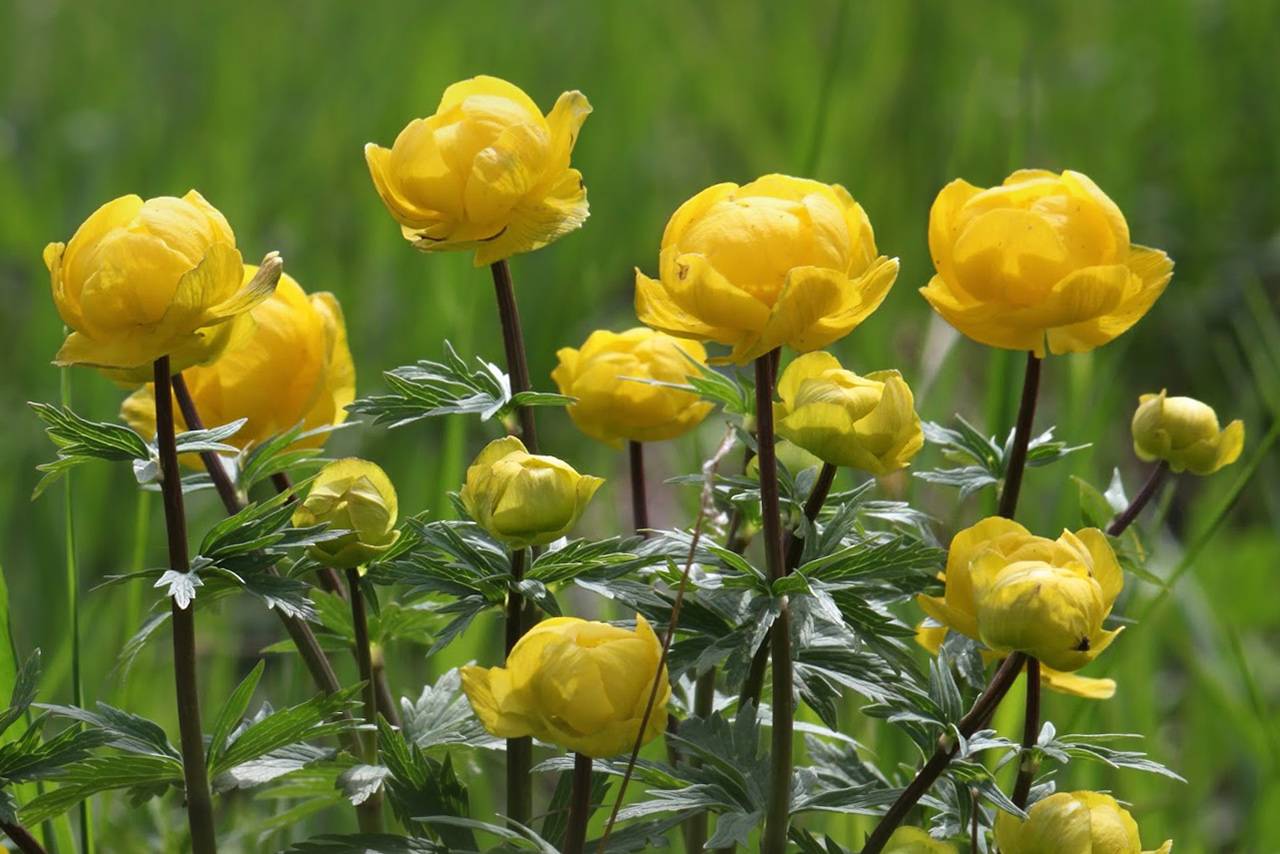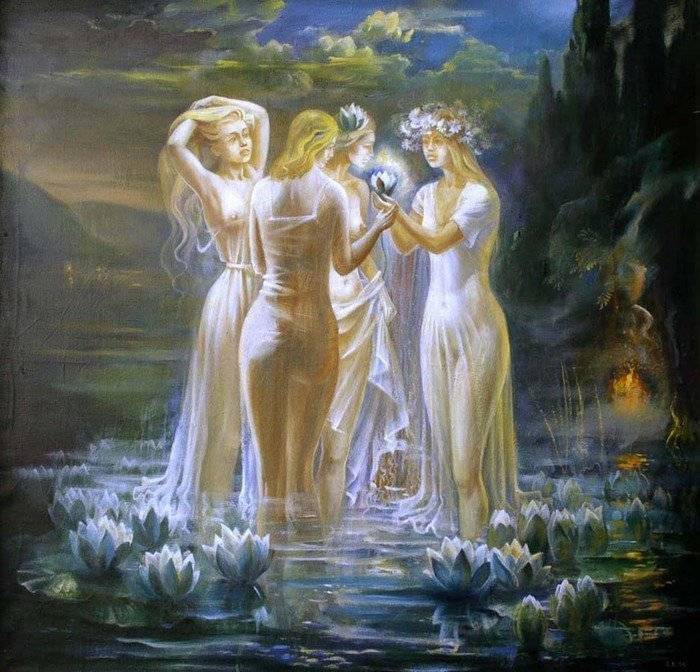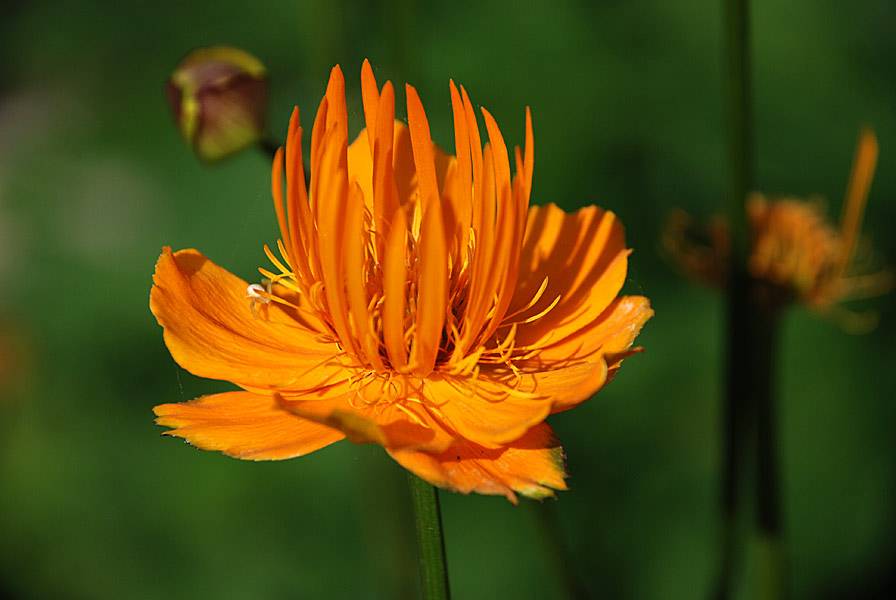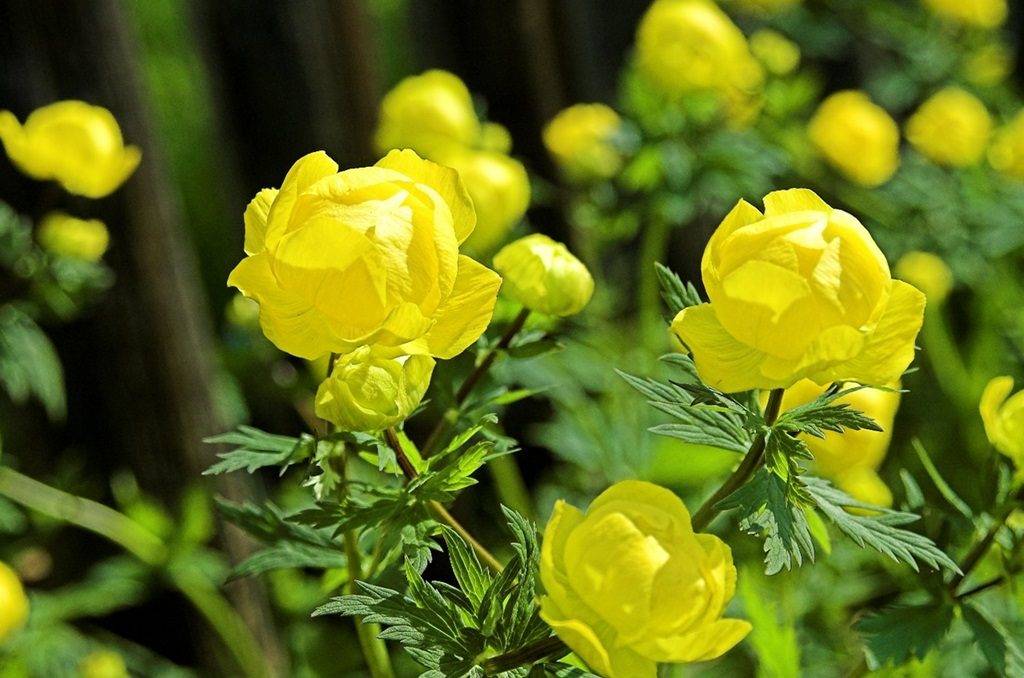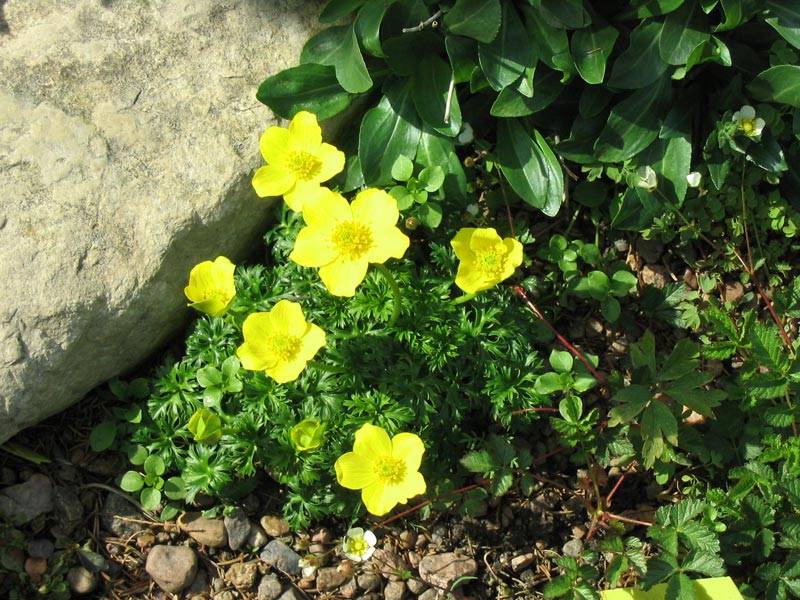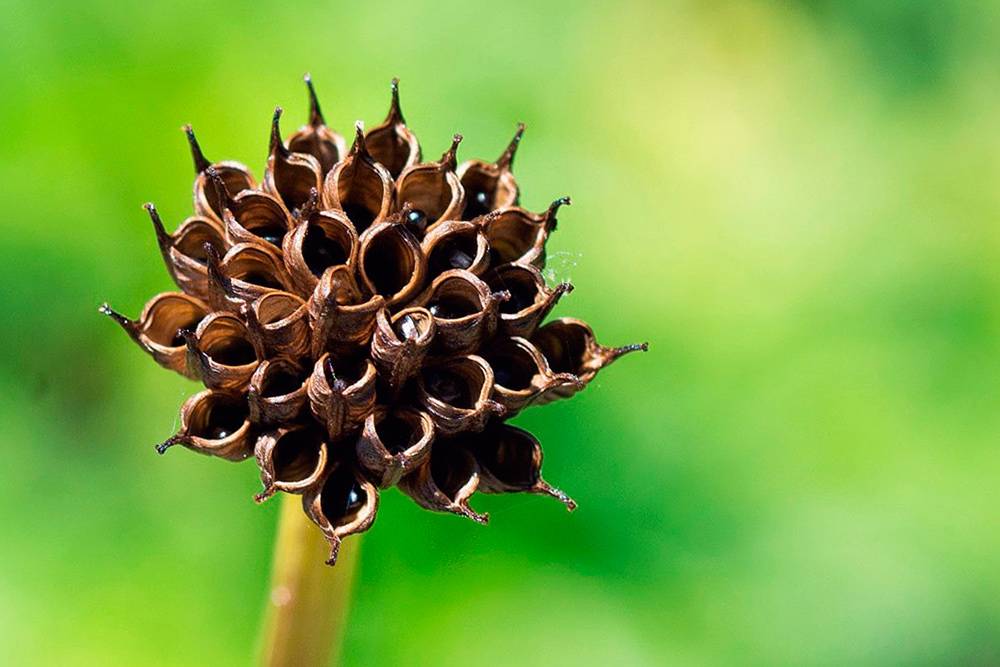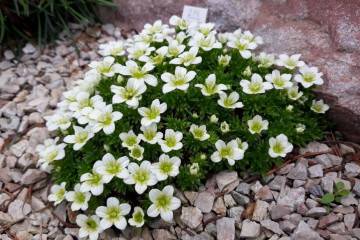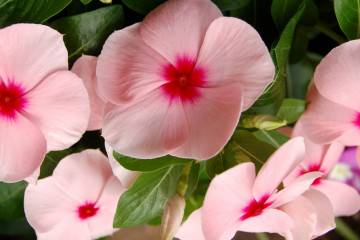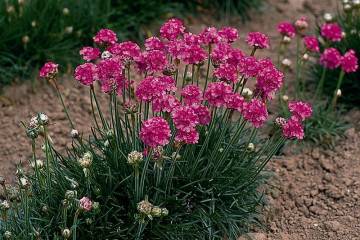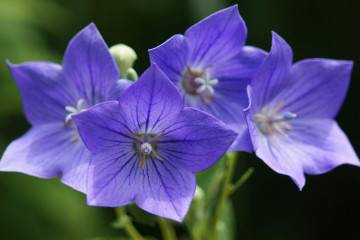Bather flower - description of the plant, planting and care in the garden
Content:
- What does a flower swimsuit look like?
- Types and varieties of swimwear and their characteristics
- Ledebour's Leotard (Trollius ledebourii)
- Asian swimsuit (Trollius asiaticus)
- European swimsuit (Trollius europaeus)
- The highest bather (Trollius altissimus)
- Dwarf swimsuit (Trollius pumilus)
- Altai swimsuit (Trollius altaicus)
- Cultural swimsuit (Trollius cultorum)
- Paper-peel leotard (Trollius chartosepalus)
- Half-open bather (Troilius patulus)
- Purple swimsuit (Trollius lilacinus)
- Large-petaled swimsuit (Trollius macropetalus)
- The varieties most popular with gardeners
- Seed propagation
- Description of reproduction by division
- Features of care in the garden
- When and how it blooms
- Possible growing problems
- Use in landscape design
The bather is a flower that everyone knows. Most often, this plant is found in the wild, but some species are also cultivated in garden plots. Recently, flower growers increasingly use it to decorate their flower beds, since it has bright decorative characteristics and is considered unpretentious.
What does a flower swimsuit look like?
The flower swimsuit looks bright, but at the same time modest. Its globular yellow heads are found almost everywhere: both in the lowlands of rivers and in city parks and squares. Everywhere they look organic and natural.
Briefly about the history of appearance
There are many myths and legends about the origin of the flower and its name. In Slavic mythology, July 6 is the day of Agrafena the Bather. This period accounts for the massive flowering of the plant. It was from this day that it was considered normal to start swimming in rivers and lakes (around which a flower grows). In the same period, the day of Ivan Kupala is also celebrated.
The swimsuit plant has many other names in different regions of Russia and neighboring countries. They call her:
- trollius;
- kupavnitsa;
- Siberian rose;
- balabolki.
There is also a legend associated with this flower. It says that there once lived a young shepherd named Alexei, who regularly drove herds of horses to Fr. Baikal. The horses ran into the water, raised a huge amount of spray, created waves and made a lot of noise, thereby frightening the mermaids living in the lake. The mermaids decided to lure the shepherd into their nets, but no matter what they did, he would not succumb to their provocations. The mermaids resigned themselves to this and returned to the bottom of Lake Baikal, but one of them fell in love with Alexei with all her heart and began to wander behind him. The shepherd avoided her in every possible way, but one day he saw a mermaid sitting by the fire. And as soon as he decided to approach her, she turned into a beautiful bikini flower.
Why is the troll flower called
The bather sounds in Latin as "Tróllius", it is not known exactly where this name came from. Someone is inclined to believe that it came from Scandinavian mythology, in which it is believed that this particular plant is the favorite flower of the trolls.
Plant characteristics
Botanical description of the common swimsuit:
- erect green stems up to 1 m in height;
- leaves are bright green, palmate;
- flowers are bright large yellow or orange;
- the aroma during the flowering period is fresh, subtle and barely perceptible.
Types and varieties of swimwear and their characteristics
Today there are only 29 plant species. Most of them grow only in the natural environment, and some, on the contrary, are bred exclusively for use in cultural plantings. There are varieties of bathers that can be grown equally freely both in the wild and in flower beds.
Ledebour's Leotard (Trollius ledebourii)
The Lebedura swimsuit is considered the most frost-resistant species among its relatives. The average height is 1 m. In nature, it is common in the Far East, Japan, China, the forests of Siberia, Mongolia. Deeply dissected leaves are found only on the top of the stem. The diameter of the fully opened flowers is about 0.5 cm, they are bright orange in color with thin tall pointed nectaries that stand out against the general background.
Asian swimsuit (Trollius asiaticus)
The natural habitat of this species is the forest edges of Siberia, Mongolia, Central Asia, the Polar Urals. In the Russian Federation, this species is also called lights or roasts due to the unusual color of the flowers. Their petals are bright orange and the sepals are orange-red. This species is one of the most beautiful and beloved by flower growers.
European swimsuit (Trollius europaeus)
This type is called the most popular and widespread. It grows throughout Europe, in Western Siberia, Scandinavia, in the European territory of Russia. The height of the swimsuit grass depends on the conditions in which it grows. For example, in mid-latitudes, it can grow up to 80 cm, while in the tundra, only up to 20-30 cm.
It features carved, beautiful, dense foliage. The stems are densely branched. Only the upper part of the peduncle is covered with foliage. The flowers are globular, about 0.5 cm in diameter, and exude a delicate, fresh scent. They consist of 1-20 sepals, they are all the same color, but it can vary from plant to plant. These can be shades from bright yellow to golden. It has been cultivated as a cultivated plant since the 16th century.
There are 2 types:
- garden bathing suit with yellowish petals;
- a wild variety with larger flowers that are close to bright orange in color.
The highest bather (Trollius altissimus)
This species is found in Western Europe, loves wet meadows with tall grass. The stem is straight, most often branched, reaching 1.5 m in height. The leaves are located on long, up to 60 cm, cuttings. Yellow-green flowers grow on peduncles located in the leaf axils. The diameter of each flower is about 60 mm.
Dwarf swimsuit (Trollius pumilus)
As the name implies, this type of swimsuit is undersized. The dwarf swimsuit is quite often found in flower beds, it can be used as a ground cover plant.
Altai swimsuit (Trollius altaicus)
The Altai variety grows in Western Siberia, Mongolia, China, Central Asia and Altai. The stem is simple or branched, the basal plates are collected in a rosette.The flowers are spherical, they contain 10 to 20 petals of yellow-gold or bright orange color. It has been cultivated as a garden plant since 1874.
Cultural swimsuit (Trollius cultorum)
This species includes many different varieties that differ in size and color.
Paper-peel leotard (Trollius chartosepalus)
The plant grows to only 15 cm in height. Grows in Chukotka and Eastern Siberia.
Half-open bather (Troilius patulus)
A low-growing variety of plant, the maximum height of which is 30 cm. The stem is straight, branched, at the ends of the shoots there are small (2-3 cm) yellow flowers. The petals are narrow, half open, linear in shape. Flowering occurs in May-June, fruiting in August.
Purple swimsuit (Trollius lilacinus)
The purple bather is a low-growing variety that is extremely rare in flower beds because of its exactingness. The leaves are bright green, consist of 5 parts, collected in a basal rosette about 7 cm high. The height of the peduncles is 10 cm, at their ends are lilac spherical flowers. This variety blooms in June.
Large-petaled swimsuit (Trollius macropetalus)
This species is garden, flowering lasts from May to June. The petals are large, the flowers are yellow-orange.
The varieties most popular with gardeners
In their summer cottages, flower growers most often grow hybrid varieties that are distinguished by maximum decorative properties, as well as a longer flowering period.
- Goliath. Tall variety (up to 90 cm) with large orange flowers. A distinctive feature is the long flowering period - about 30 days;
- Orange King. Medium plant, about 50 cm high. The flowers are large, about 5 cm, the petals are dark orange, the nectaries are brighter;
- Lemon queen. Quite a tall hybrid of a European swimsuit, it grows to almost 1 m. The flowers are yellow, 4-5 cm in diameter;
- Lightball. Bush height up to 60 cm, flowers 6 cm, yellow nectaries, orange petals;
- Orange Princesses. This swimsuit is orange, up to 60 cm in height, with bright colors up to 6 cm in diameter;
- Fire Globe. Bathing suit up to 60 cm high. The color of the petals is orange-red;
- Orange Glob. Miniature plant with bright orange flowers;
- Canary Bird. Differs in unusual flowers of a pale yellow color;
- Alabaster. Unusual variety: flowers are almost completely open, their color is cream. An original swimsuit, almost white, which is not typical for representatives of the genus;
- Elist of All. Early flowering swimsuit. It blooms in early May. The color of the petals is dark yellow, the nectaries are golden-orange. The bush is not tall, but blooming profusely;
- Goal Cross. A variety that blooms profusely, flowers are located on a branched bush. Sepals are yellow, nectaries are orange;
- Goldkwell. Large, up to 6 cm in diameter, bright yellow flowers are characteristic of this popular variety.
Seed propagation
The bather can reproduce in three main ways: by dividing the bush, by seeds, buying ready-made seedlings in the store. Using the seed method, you can grow a swimsuit both from seedlings and by sowing planting material directly into open ground.
Boarding time
The optimal time for planting in containers is mid-winter, January is best.
Mandatory seed stratification
Since the seeds need mandatory cold treatment before planting, they can be planted in the ground in mid-autumn, after which the containers can be placed in an unheated room.In the spring, when the swimsuit hatches from the seeds, it can be dived.
Soil preparation
Soil for sprouting orange and yellow swimsuits must meet the following requirements:
- breathable;
- moisture permeable;
- loose;
- nutritious.
For its preparation, you can mix peat, humus and leafy soil in equal parts.
Picking
When the swimsuit sprouts, young plants dive, leaving only the strongest specimens.
Can I transplant from a pot
It is important to know how to plant a potted swimsuit outdoors. This procedure is carried out at the end of summer, when the flowers are already quite strong. You need to transplant carefully, without damaging the root system.
Description of reproduction by division
Seed propagation is not the most popular. Most often, this flower is propagated by dividing the bush. For this, adult plants are taken, dug up and carefully divided into several parts. Places of cuts are sprinkled with crushed charcoal.
When a plant is propagated in this way, the cultivation of a swimsuit flower becomes more productive, it rejuvenates and blooms even more brightly and magnificently.
Features of care in the garden
Planting and caring for a swimsuit in the garden does not require special costs. The flower is absolutely unpretentious.
It is no coincidence that the swimsuit is called a marsh plant; it prefers places with high humidity. This is genetically inherent in her.
What is the plant afraid of
The swimsuit is afraid:
- shadows;
- droughts;
- strong wind.
Watering
Watering is required regularly as the topsoil dries out. During dry periods, this procedure should be carried out daily.
Mulching
Mulching with natural material can be carried out to reduce the amount of liquid evaporated from the surface.
Loosening
After watering, it is recommended to slightly loosen the soil around the flower. It is also important to remove the weeds growing around.
Top dressing
Top dressing is optimally carried out 2 times a season: after the snow melts and before laying the buds. The following mixture should be used for fertilization:
- water (10 l);
- urea (1 tablespoon);
- nitrophoska (1 tsp).
Fertilizers are applied in small doses.
Transfer
The transplant is performed as needed or in order to rejuvenate the plant.
When and how it blooms
When a swimsuit is in bloom, you can admire it endlessly, especially if it is a mass planting. Flowers, depending on the variety, can be simple, semi-double or double. The shape of the flowers of the swimsuit of all varieties is spherical.
Changes in care during flowering
The plant does not require any changes in care.
Possible growing problems
This plant can be easily grown in your garden or vegetable garden. It is highly immune to most diseases.
Since the plant is poisonous, pests practically do not touch it. If someone has been seen on a flower, you can treat it with an insecticide.
Diseases almost never attack the swimsuit. Fungal infections such as smut and septoria can sometimes appear. In this case, a fungicide will help.
Use in landscape design
The flower is actively used by landscape designers to decorate alpine slides, artificial reservoirs, Scandinavian-style flower beds. Yellow flowers look wonderful against the background of other tall, bright, contrasting colors, for example, with irises, cornflowers, delphiniums, lumbago.
The bather is a plant that is often used by flower growers. It is easy to grow, it practically does not require any conditions. Therefore, such a beautiful flower is suitable for those who do not have the opportunity to spend a lot of time at their summer cottage. Growing a flower swimsuit for them is the best option.
